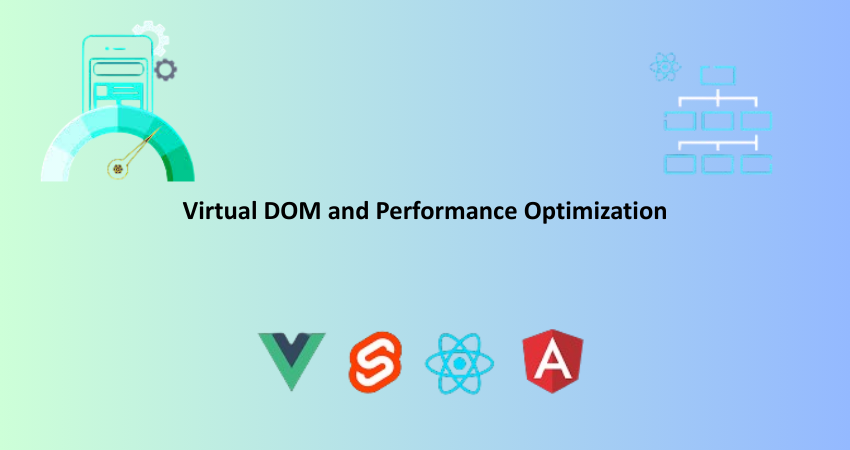
Introduction
React is one of the greatest front-end libraries and has set the pace for any web development. It was created and is maintained by the good folks at Facebook and provides a new style of thinking for developers to go about building user interfaces. The component concept, virtual DOM, and engagement for performance are some of its attributes that enable developers to develop dynamic, scalable, and easily maintainable web applications. In the fast-paced world of the web, a seamless user experience is a matter of survival, and React provides all the ammunition to accomplish that.
It is not incidental that React became so important. A robust ecosystem further fortified by an active community and regular updates has kept React popular with one-man show startups as well as corporate giants. React’s versatility in integrating with other frameworks, its ability to do server-side rendering, and its popular use on mobile devices via React Native continue to bolster its front-end reputation. In this article, we will take on some of the workings and principles behind the might of React in modern web development encompassing its architecture, performance benefit, development experience, and future over potential.
Component-Based Architecture
Reusability and Modularity
The characteristic of React concerning component-based architecture is for the reutilization and modularity, the other key aspect. In React, everything is a component-everything from a button with an event function and an input field to a complex layout-composed of independent, self-sufficient units. The modularity gives developers the ability to break down the UI into small pieces, which can, in turn, be developed, tested, and maintained independently. These components can be reused in different areas of the same application or in many different projects, thus helping save time and keep the user interface consistent.
Reusability, in this case, starts becoming extremely effective when we speak about large enterprise applications, where it becomes critical to maintain consistency and minimize code duplication. A good way to accomplish this is by encapsulation of functionality and styling within a component: whenever that particular component is used, the UI behaves predictably, easier as a consequence to manage. React component libraries and design systems serve to take this a notch higher by providing pre-styled components that are smooth to integrate. Modularization and reusability as prime concerns make React a choice familiar to all fast-scaling teams that want to sustain maintainability.
Maintainability and Scalability
The architecture of React is innately maintainable and is intended to assist in the maintenance of extensive and growing code bases. Since each component holds its own logic, state, and presentation, any changes made will be independent and would cut the possibility of having unintended effects. Changes made to a feature or a bug might often be isolated to a single component making it easier to find the component that needs debugging. This encapsulation fits well with clean code principles and separation of concerns-making for long-lasting functions in a project.
The feature that scales up this design of React is of great benefit. The increased dependency has a modular cascading nature to the component-oriented structure that would help a developer organize pieces of code logically and hierarchically from the overall application. Feature development can be built onto standalone modules that will introduce themselves into the main application without breaking existing functionality. It makes it easier to bring new developers in and helps teams work in parallel on different parts of the same application. It lets both code and people grow and therefore weighs on React as a framework set on a long-term benefit.
Virtual DOM and Performance Optimization

Understanding the Virtual DOM
Virtual DOM is one of the most exciting and innovative features of React, it is a representation of the DOM in-memory over a thin level of awareness of reality. DOM manipulation is very slow and clearly decays the performance of an application; it is especially terrible when used within complex user interfaces. But React handles this by using a virtual DOM to batch and optimize updates before these happen on the physical DOM: ”which reduces reflows and repaints that take place within the user interface, resulting in a smoother and more responsive user experience”.
When changes happen to a component’s state, updates are first made on the virtual DOM. After this, the latter is ”diffed” by comparing it with the older version. Each difference is then affected to the real DOM. In this way selective updating ensures application of the minimum number of manipulations on the DOM, in sharp contrast to a whole redraw of the interface. The virtual DOM is at the heart of what gives React its performance benefits and one of its major reasons for being much faster than many such conventional JavaScript frameworks when rendering.
Efficient Rendering and State Management
Rendering, combined with efficient state management, is the hallmark of React. In that regard, state is meant to be decided at a component level, however, it can always be passed all over by means of props, used to manipulate shared states between sibling components with context or even an external library like Redux or Recoil. Because When a component re-render is happening from a change in state, React prevents the unnecessary action for performance optimization of user interaction with the data. It allows developers to design applications responding well to the user’s interactions with heavy data processing.
Lifecycle method and hook like useMemo or useCallback further internal optimization of performance by avoiding unnecessary re-computation of heavy calculations. One way such as lazy loads components and code-split, React.lazy, and React Suspense are used to reduce the bundle size at the start, enabling the application to load faster. These features provide a fast speed application to work with seamless experience across all types of devices, thus making React a go-to for performance-centric applications.
Developer Experience and Ecosystem
Intuitive Syntax and JSX
Due to its JSX syntax extension, which allows users to write HTML-like code in JavaScript, React becomes easy to use. Thus, JSX creates a bridge between markup and logic, and it allows component creation to be seen more clearly and openly. With this, the developers can say how the UI elements should appear and also respond when they are in one context, without having the difficulty imposed by separating HTML and JavaScript. Merge all of this together, and we create a nice, frictionless development process that fits the mental model of building user interfaces quite nicely.
It is relatively easy for designers to create forms that will syntactically react to a declarative programming statement; i.e., developers will write either how the UI should look in accordance with the application’s state or how that UI would look if the application would be in that state. It’s very ideal for onboarding and debugging processes and really adds control with reduced side effects, hence, increasing predictability. Hot module replacement (HMR) and fast refresh, by improving feedback loops during development, allow developers to see changes almost instantly without needing to reload the whole application. This contributes to an overall enjoyable development experience, very critical for keeping the flow and motivation going.
Rich Tooling and Community Support
The entire ecosystem surrounding React is very elaborate and well-supported, encompassing a myriad of effective tools, libraries, and extensions that augment development. Scanning across a wider array of code editors such as Visual Studio Code with specific plugins for React-related development to frameworks built upon React like Next.js or Gatsby will, one way or the other, have provisions for almost every use case possible in practice. Debugging tools such as React Developer Tools help show the hierarchies of components, state changes with pretty good performance metrics to make diagnosing and fixing faults much easier.
Much more important than that, however, is the sheer community support behind React. With millions of developers using React all around the globe, various resources such as tutorial and documentation, open-source projects, and community forums can be found rather easily. There are real-time help and collaboration opportunities via Stack Overflow, GitHub, and much Discord channels as well. Thus, this thriving ecosystem not only speeds up problem-solving but also nurtures an environment of innovation through shared knowledge and reusable components. Is it really an experience for a new or expert developer to never build in silo with React?
React’s Versatility and Integration

React Native and Cross-Platform Development
Through React Native, React has applications beyond web development into mobile application development. With this framework, developers are able to build native mobile apps for iOS and Android while using the same React principles and component structure. React Native takes the React components and translates them into native widgets, providing a high-performing mobile experience for the developer without requiring them to know platform-specific languages such as Swift or Java. This strengthened consistency also lowers the learning curve and increases the reuse of code across platforms.
With extreme flexibility in sharing code without breaking much of its core foundation, organizations using React and React Native can maintain a single codebase with a single development team focusing on both web and mobile. This streamlined development process also guarantees consistent user experiences across devices. The live reload and hot reloading features of React Native are the same features that work their magic so well for developers using React for the web, thereby facilitating fast iteration and continuous delivery. Popular brands such as Facebook, Instagram, and Airbnb prove the viability of React Native for robust cross-platform application development.
Seamless Integration with Other Libraries and Frameworks
The other factor that propounds React as a front-end juggernaut is its flexibility and easy integration with other tools and libraries. Unlike opinionated frameworks that impose a strict structure, React works purely on the view layer, leaving developers to adopt their own routing, state management, and backend technologies. This feature of modularity makes it easy to incorporate React into existing projects or integrate it with tools like Redux, React Router, or Formik in building complex applications.
React also works effectively with the latest frameworks and build tools out there-Webpack, Babel, and Vite. This interoperability allows developers to freely assemble their tech stack according to specific project demands, rather than being tied to any specific ecosystem. It has also seen a new dawn of meta-frameworks that extend React capabilities by offering server-side rendering plus static site generation and API routes, such as Next.js. These types of improvements then empower developers to build performant and SEO-friendly applications on top of what React already offers.
Conclusion
React has always been the front-runner in the world of Web-by-creating modular architecture, high performance, easy development, and a very rich ecosystem. By developing reusable components and an efficient optimization of the DOM with a virtual DOM, it offers a whole set of tools and libraries through which developers can build user interfaces that are scalable, maintainable, and responsive. React is straightforward with its declarative approach, and with such community support, it becomes a framework that developers of all levels can use.
In addition, React’s versatility either extends to mobile development with React Native or modern build tool integration—definitely a must for a fast-paced environment. It doesn’t matter if you create a simple website or an enterprise-grade application or maybe you have a Cross-Platform Mobile Solution; React stands up to the flexibility and performance demands required for success. With new developments in web development, the floor on which React stands will be marketing trends over the next years and running front-end innovations.